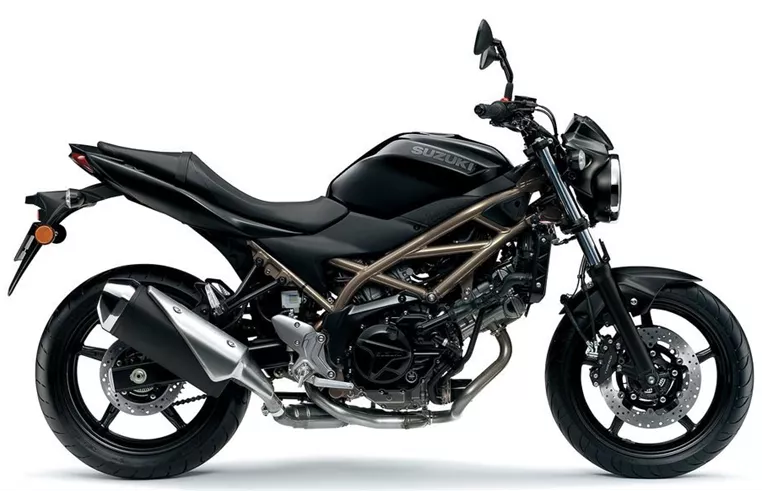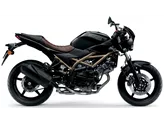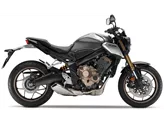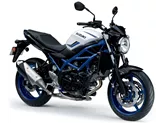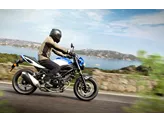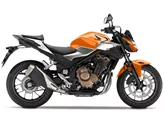Honda CB650F 2017 vs. Suzuki SV 650 2021

Honda CB650F 2017
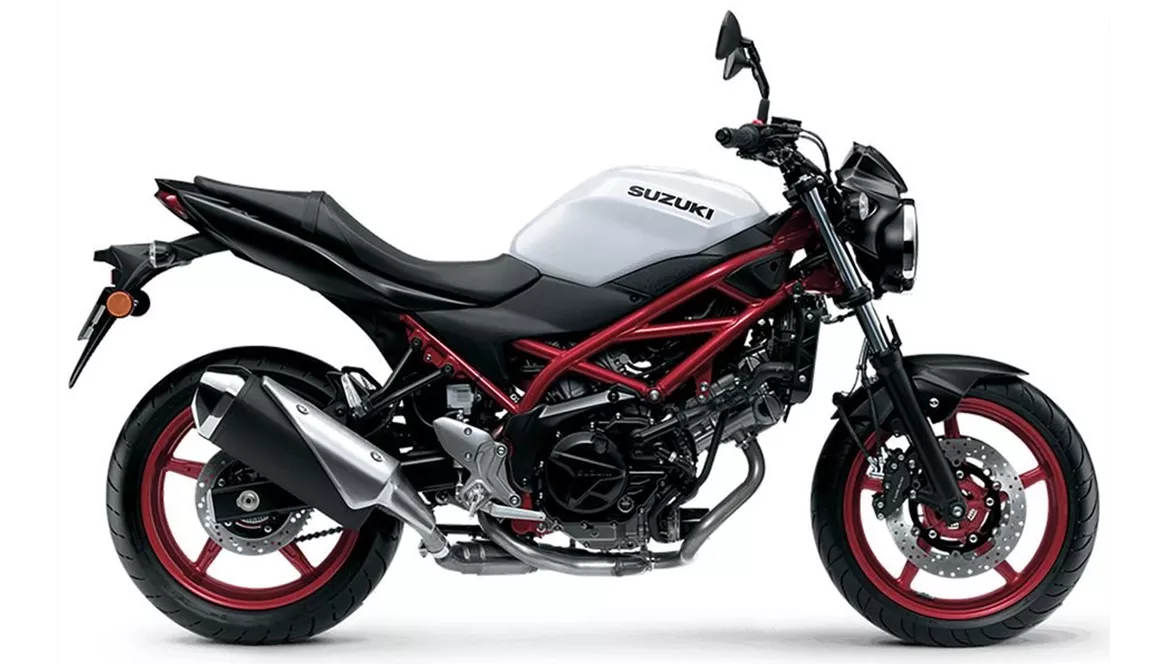
Suzuki SV 650 2021
Vue d’ensemble - Honda CB650F 2017 vs Suzuki SV 650 2021
The Honda CB650F 2017 and the Suzuki SV 650 2021 are both naked bikes that offer unique features and characteristics.
Starting with the engine and drivetrain, the Honda CB650F 2017 is equipped with an inline four-cylinder engine that produces 91 horsepower and 63 Nm of torque. On the other hand, the Suzuki SV 650 2021 features a V-twin engine that delivers 73 horsepower and 64 Nm of torque. Both bikes utilize fuel injection systems and have liquid cooling to maintain optimal engine temperature.
In terms of suspension, both bikes have telescopic forks in the front and swing arms with monoshock absorbers in the rear. The suspension on the Honda CB650F 2017 is adjustable for preload, while the Suzuki SV 650 2021 also offers preload adjustment. However, the Honda CB650F 2017 has an aluminum rear shock absorber, while the Suzuki SV 650 2021 has a steel one.

Honda CB650F 2017
When it comes to the chassis, both bikes feature steel frames that provide stability and strength. The Honda CB650F 2017 has a steel frame, while the Suzuki SV 650 2021 also utilizes a steel frame.
In terms of braking, both bikes are equipped with double disc brakes in the front. However, the Honda CB650F 2017 has larger diameter discs (320 mm) and double piston calipers, while the Suzuki SV 650 2021 has smaller diameter discs (290 mm) and four-piston calipers. Both bikes are equipped with ABS for advanced rider assistance.
In terms of dimensions and weights, the Honda CB650F 2017 has a front tire width of 120 mm and a rear tire width of 180 mm, while the Suzuki SV 650 2021 has a front tire width of 120 mm and a rear tire width of 160 mm. The wheelbase of the Honda CB650F 2017 is slightly longer at 1450 mm compared to the 1445 mm of the Suzuki SV 650 2021. The seat height of the Honda CB650F 2017 is higher at 810 mm compared to the 785 mm of the Suzuki SV 650 2021. The kerb weight of the Honda CB650F 2017 is slightly heavier at 208 kg with ABS, while the Suzuki SV 650 2021 weighs 200 kg with ABS. The fuel tank capacity of the Honda CB650F 2017 is larger at 17.3 liters compared to the 14.5 liters of the Suzuki SV 650 2021.
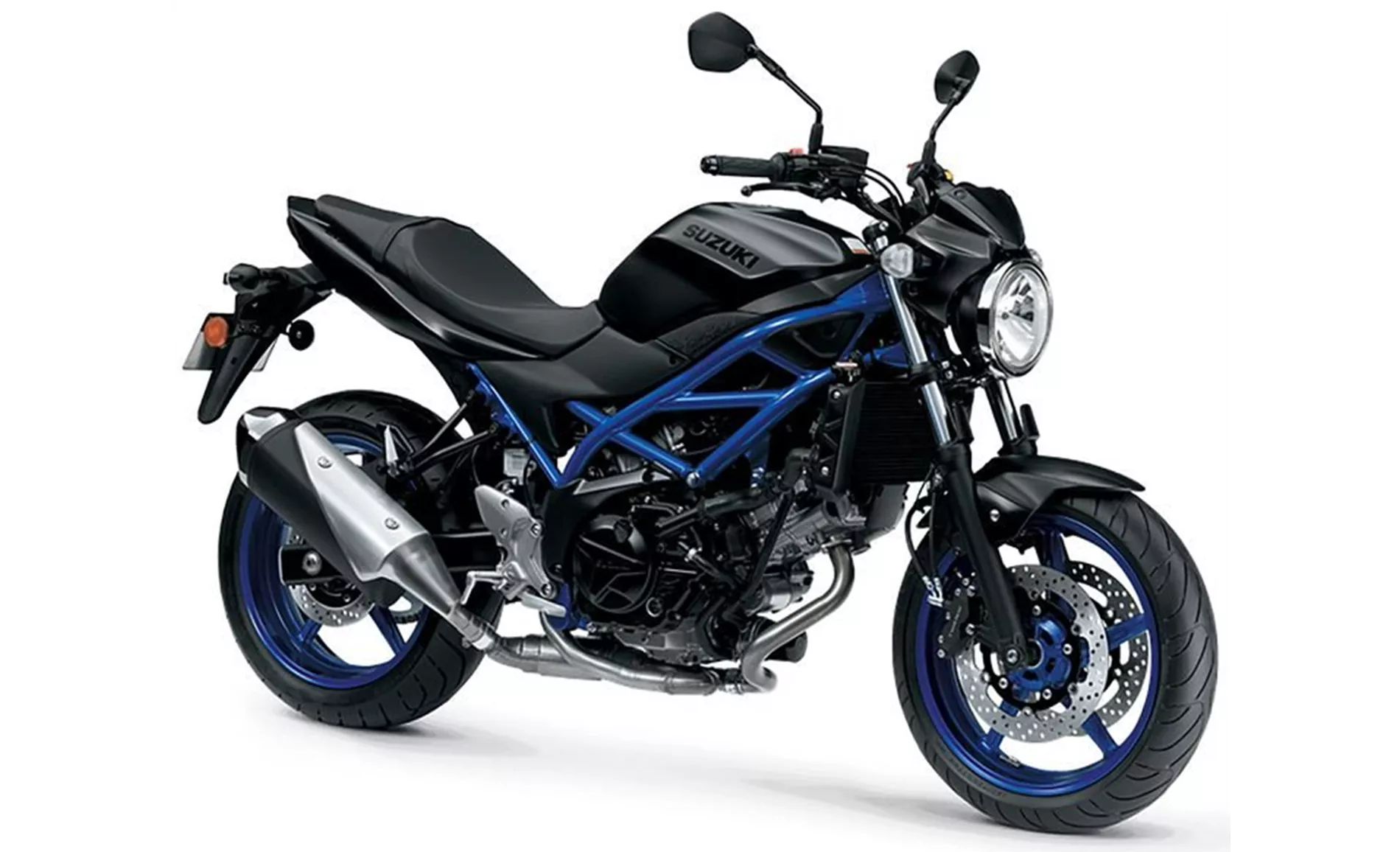
Suzuki SV 650 2021
Moving on to the strengths of each bike, the Honda CB650F 2017 offers sufficient torque even at low revs, a sporty chassis for agile handling, LED lighting technology for improved visibility, and a grown-up look that appeals to mature riders. On the other hand, the Suzuki SV 650 2021 boasts a confident V2 powerplant with character, a stable chassis for enhanced stability, a comfortable seating position for long rides, easy handling for maneuverability, and a timeless look that never goes out of style.
However, there are also weaknesses to consider. The Honda CB650F 2017 has a display that is difficult to read, which can be inconvenient for riders. On the other hand, the Suzuki SV 650 2021 requires manual force for braking, lacks additional electronics apart from ABS, and has instruments that are moderately readable.
In conclusion, both the Honda CB650F 2017 and the Suzuki SV 650 2021 have their own unique features and characteristics. The Honda CB650F 2017 offers a sporty and powerful ride with LED lighting technology, while the Suzuki SV 650 2021 provides a confident and comfortable riding experience with a timeless design. Ultimately, the choice between these two bikes will depend on the rider's preferences and priorities.
Caractéristiques techniques Honda CB650F 2017 par rapport à Suzuki SV 650 2021
Avantages et inconvénients en comparaison
Avantages et inconvénients en comparaison
Honda CB650F 2017

Dans sa dernière version, la Honda CB 650 F 2017 est exactement la moto naked à quatre cylindres que nous voulions chez Honda. Le réglage du moteur et le rapport de transmission plus court garantissent un sprint rapide à 100 km/h, avec un son de quatre cylindres criant. Le réglage du châssis est également très sportif, ce qui permet de se sentir immédiatement à l'aise sur la Honda. Avec la technologie d'éclairage LED, Honda prouve que la CB 650 F est en phase avec son temps, seul l'écran mérite d'être revu.
Suzuki SV 650 2021
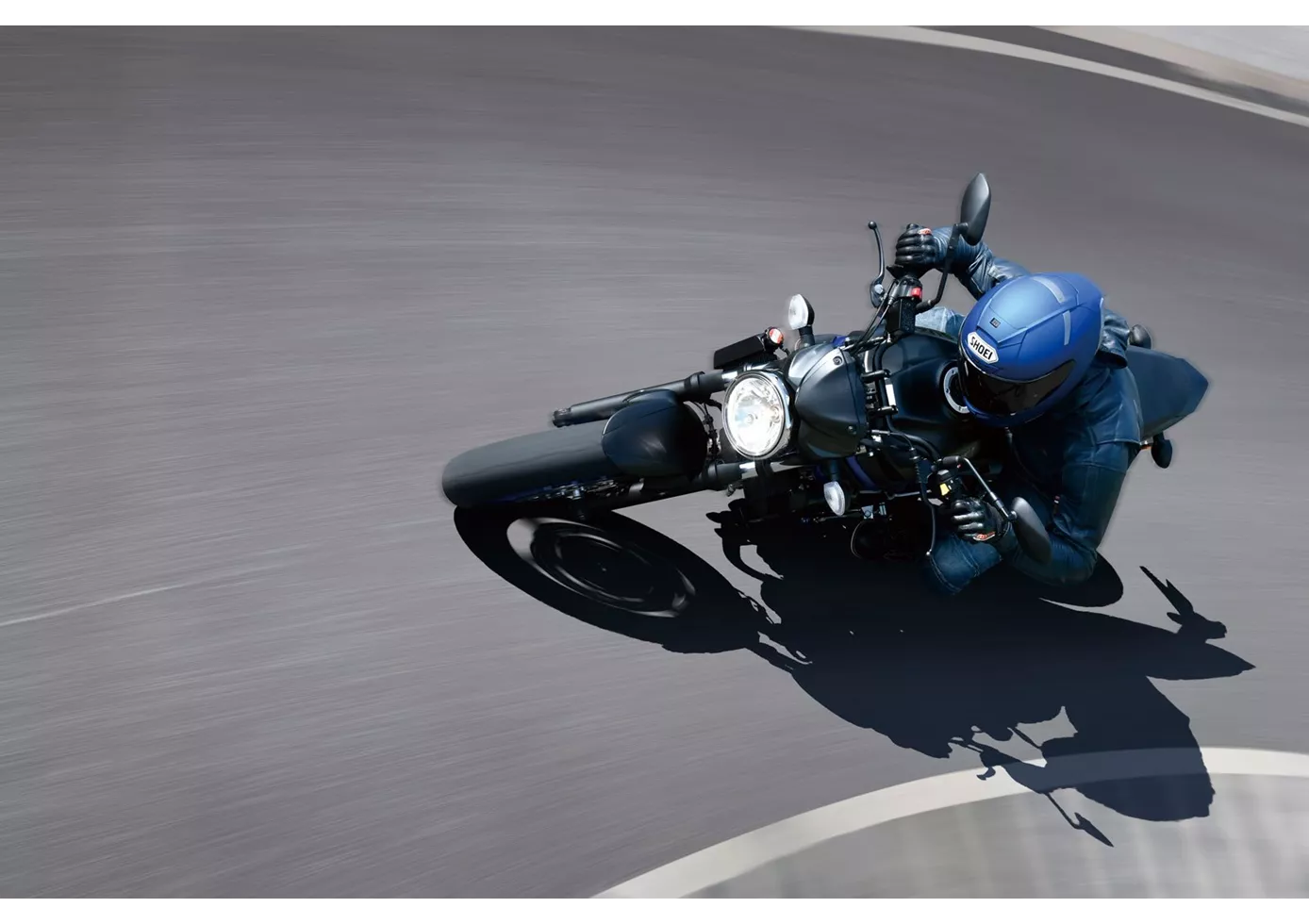
La Suzuki SV 650 n'a pas beaucoup évolué depuis cinq ans par rapport à son prédécesseur. Le moteur a été mis à jour selon la norme Euro5 et se présente désormais de manière encore plus adulte, ce qui lui permet de s'intégrer parfaitement au reste du package. La SV 650 ne veut effrayer personne, surtout pas les débutants. Le châssis donne une impression de solidité et de sérénité, le frein demande une bonne force manuelle pour éviter un surfreinage inattendu. L'optique est d'une part intemporelle, mais d'autre part vraiment un peu dépassée sur certains composants. En revanche, le prix est correct, comme d'habitude chez Suzuki.
Comparaison des prix Prix moyen du marché Honda CB650F vs Suzuki SV 650
There are a few key differences between a Honda CB650F 2017 and a Suzuki SV 650 2021. It takes less time to sell a Honda CB650F with 72 days compared to 111 days for a Suzuki SV 650. Since model year 2014 1000PS.de editors have written 14 reviews for the Honda CB650F and 25 reviews for the Suzuki SV 650 since model year 2005. The first review for the Honda CB650F was published on 11/4/2013 and now has more than 14,100 views. This compares to more than 14,200 views for the first review on Suzuki SV 650 published on 9/26/2008.

